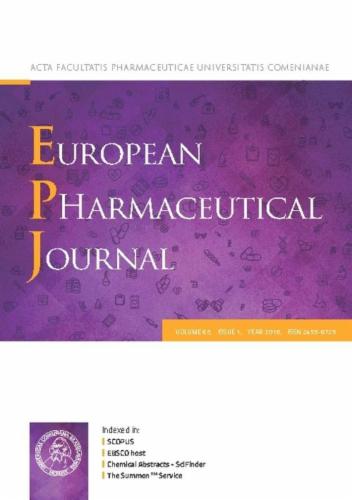将高通量ASD筛选与rDCS结合,简化难溶性药物的开发。
IF 4.3
3区 医学
Q1 PHARMACOLOGY & PHARMACY
引用次数: 0
摘要
活性药物成分(api)水溶性差、溶出速度慢是口服药物开发过程中经常遇到的挑战,导致生物利用度不稳定和不足。为了克服这些挑战,经常采取所谓的“使能”拟订战略。其中,无定形固体分散体(ASDs)是改善药物吸收的有效手段。然而,如果没有系统地评估体外ASD筛选方法的结果并将其与预期的生物利用度增加联系起来可能是困难的。在这里,我们首次展示了高通量ASD筛选方法与改进的可发展性分类系统(rDCS)的结合如何简化难溶性api作为ASD的配方。采用非晶态药物稳定聚合物筛选(SPADS)方法快速制备ASD膜,研究了八种聚合物载体对比妥吡坦、塞来昔布和伊曲康唑三种原料药溶出性能的改善。结果表明,溶出原料药的浓度与载药量和载体高度相关。对于所研究的原料药,Eudragit E、HPMC 100LV和Soluplus作为载体表现出特别有利的作用。将这些结果转换到rDCS框架中,可以可视化分类中的左移(更有利于吸收)。一些ASD膜被归类为rDCS I类,与最初纯API的IIb分类相比有了很大的改善。这种新颖的方法可以扩展为包括一套不同的筛选方法来实现配方策略,其中rDCS可以允许直接比较和支持配方选择。本文章由计算机程序翻译,如有差异,请以英文原文为准。

Combining high-throughput ASD screening with the rDCS to streamline development of poorly soluble drugs
Poor aqueous solubility and slow dissolution rate of active pharmaceutical ingredients (APIs) are often encountered challenges during oral drug development, leading to variable and insufficient bioavailability. To overcome these challenges, a so-called “enabling” formulation strategy is often pursued. Among these, amorphous solid dispersions (ASDs) are established as an effective means of improving drug absorption. However, evaluating the outcome of in vitro ASD screening approaches and relating this to the expected bioavailability increase can be difficult if not done systematically. Here we show, for the first time, how the combination of a high-throughput ASD screening method with the refined Developability Classification System (rDCS) can streamline the formulation of poorly soluble APIs as ASDs. Using the Screening of Polymers for Amorphous Drug Stabilization (SPADS) approach to rapidly prepare ASD films, the improvement in dissolution performance of three APIs (befetupitant, celecoxib and itraconazole) was investigated with eight polymeric carriers. The results showed that the concentration of dissolved API was highly dependent on both the carrier and the drug load. For the APIs studied, Eudragit E, HPMC 100LV and Soluplus showed especially advantageous effects as carriers. Translating these results into the rDCS framework allowed for the visualization of the left-shift (more favorable for absorption) in classification. Several ASD films were classified as rDCS class I, showing a major improvement from the initial IIb classification of the pure API. This novel approach could be expanded to include a diverse set of screening methods for enabling formulation strategies, where the rDCS can allow for a direct comparison and support formulation selection.
求助全文
通过发布文献求助,成功后即可免费获取论文全文。
去求助
来源期刊
CiteScore
9.60
自引率
2.20%
发文量
248
审稿时长
50 days
期刊介绍:
The journal publishes research articles, review articles and scientific commentaries on all aspects of the pharmaceutical sciences with emphasis on conceptual novelty and scientific quality. The Editors welcome articles in this multidisciplinary field, with a focus on topics relevant for drug discovery and development.
More specifically, the Journal publishes reports on medicinal chemistry, pharmacology, drug absorption and metabolism, pharmacokinetics and pharmacodynamics, pharmaceutical and biomedical analysis, drug delivery (including gene delivery), drug targeting, pharmaceutical technology, pharmaceutical biotechnology and clinical drug evaluation. The journal will typically not give priority to manuscripts focusing primarily on organic synthesis, natural products, adaptation of analytical approaches, or discussions pertaining to drug policy making.
Scientific commentaries and review articles are generally by invitation only or by consent of the Editors. Proceedings of scientific meetings may be published as special issues or supplements to the Journal.

 求助内容:
求助内容: 应助结果提醒方式:
应助结果提醒方式:


